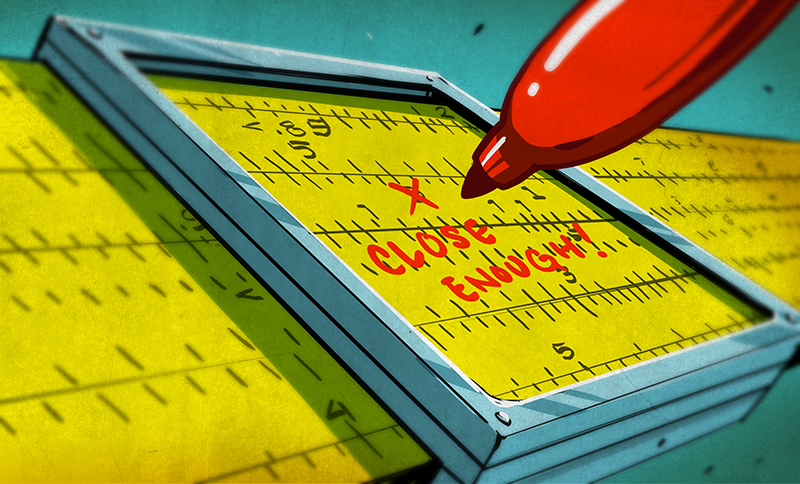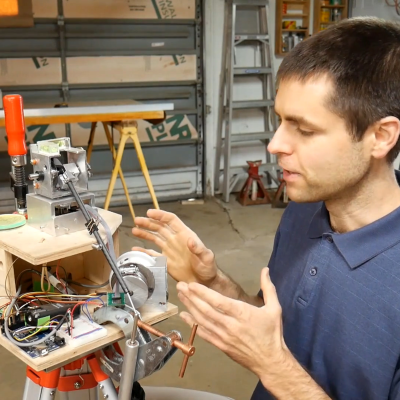The Devil is in the Details

If you’ve taken a physics class, you’ve doubtless heard tales of mythical beasts like the massless string, the frictionless bearing, and the perfect sphere. And if you’re designing something new, it’s not always wrong to start by thinking in terms of these abstractions, just to get the basic framework laid and a first-order handle on the way things go. But once you start building, you’d better be ready to shed your illusions that a 6 mm peg will fit into a 6 mm hole.
 Theory and practice are the same thing, in theory. But as soon as you step into practice, your “weekend build” can easily turn into a 500-hour project, full of hurdles, discoveries, experimentation, and eventual success. I’m not going to rehash [Scott Rumschlag]’s project here — you should really watch his detailed video — but suffice it to say that when building a sub-millimeter precision 3D measuring device, bearings do have friction and string does have non-zero mass, and it all matters.
Theory and practice are the same thing, in theory. But as soon as you step into practice, your “weekend build” can easily turn into a 500-hour project, full of hurdles, discoveries, experimentation, and eventual success. I’m not going to rehash [Scott Rumschlag]’s project here — you should really watch his detailed video — but suffice it to say that when building a sub-millimeter precision 3D measuring device, bearings do have friction and string does have non-zero mass, and it all matters.
When you start working on a project that “looked good on paper” or for whatever reason just doesn’t turn out as precisely as you’d wished, you could do worse than to follow [Scott’s] example: start off by quantifying your goals, and then identify where every error along the way accumulates to keep you from reaching them. Doing precise work isn’t easy, but it’s not impossible either if you know where all the errors are coming from. You at least have a chain of improvements that you can consider, and if you’ve set realistic goals, you also know when to stop, which is almost as important.
And if anyone out there has an infinite sheet of perfectly conductive material, I’m in the market.
Post a Comment